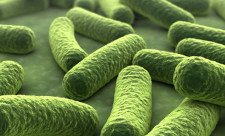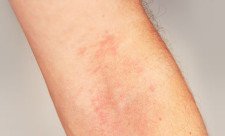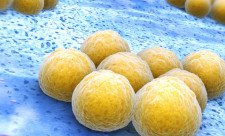
Many parents worry about their children’s health: telling them not to play in the dirt, be careful about plants in forests and meadows, avoid touching animals. But many of these worries are unfounded. To the contrary: They may even be detrimental to a healthy diversity of skin bacteria. Scientists have found that there is a significant correlation between, on the one hand, low bacterial diversity in someone’s surroundings and reduced contact of adolescents with their natural environment and its biodiversity, and on the other hand, microbial diversity, i.e. diversity of bacteria, on the adolescents’ skin. And, most interesting: The lower the diversity, the higher the risk of atopic dermatitis and eczema or allergies. The higher the diversity, the better the protection.
Symptoms of atopic dermatitis are often extremely dry skin, in particular on hands and in the crease of the elbow, as well as strong itching. People with AD scratch themselves, damaging their skin, often resulting in weeping eczema and lesions which may lead to bacterial, fungal, or viral infections.
In the case of allergies or atopic dermatitis, it may be helpful to maintain the skin’s natural defences by protecting or reintroducing healthy bacteria. Recent studies suggest that even bacteria which are only present on the skin in small quantities play an important role. Bacteria of the class gammaproteobacteria, which make up only three percent of the skin flora, seem to offer strong protection from allergies. Gammaproteobacteria provide the skin with a healthy, highly cohesive barrier. These healthy bacteria are found in the ground and on vegetation, a Finnish study detected them on grass pollen, among others.
The study examined 118 adolescents which had since childhood lived in small towns or villages. The result showed that biodiversity in long-term surroundings has a positive impact on the skin flora’s composition. Near forests and farmland, there was evidence of fewer allergies. The gardens of healthy participants boasted considerably more rare flowering plants than those of allergy sufferers. See also: PNAS vol. 109, p. 8335 (2012).
Dieser Post ist auch verfügbar auf: German

 14. Oct 2014
14. Oct 2014 Popular
Popular Recent
Recent Comments
Comments












